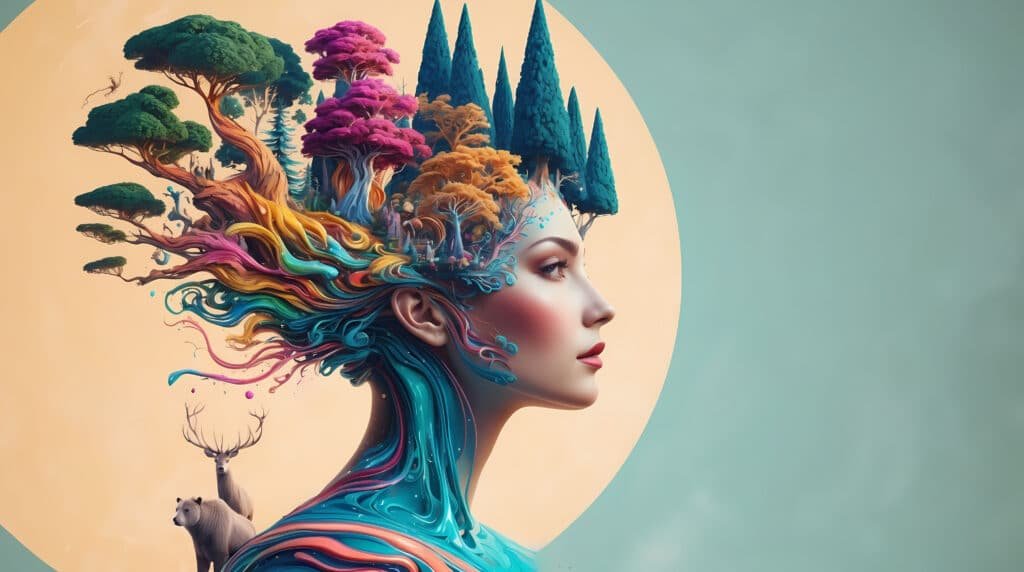
In today’s competitive market, brands continuously seek fresh ways to visually communicate their identity. A growing number of designers and creative teams are turning to AI image generators not as a replacement for human creativity, but as a powerful supplement to traditional design methods. This approach reshapes workflows and produces distinctive brand aesthetics more efficiently.
Integrating AI Image Generation in Design Workflows
AI tools like DALL·E, Midjourney, and CGDream translate text prompts into bespoke visuals that designers refine into final assets. By combining AI‑driven concepts with human judgment, teams can rapidly explore dozens of directions, cutting early‑stage design time from days to hours.
How It Works in Practice
- Define Brand Parameters
Gather existing logos, color palettes, typography, and mood boards to ensure consistency. - Craft Detailed Prompts
Specify style, color, and composition (“minimalist logo with navy accents and modern typography”) to guide the AI. - Iterate & Refine
Generate multiple outputs, select promising options, then polish in Adobe Illustrator or Photoshop.
This process excels for rebranding initiatives where preserving brand DNA matters and for campaign-specific visuals that require swift concept validation.
Industry Trends and Real-World Applications
- Broad Adoption Across Sectors
- Creative agencies and startups alike leverage AI to prototype multiple design options quickly.
- Brands use AI-generated visuals to differentiate themselves in saturated markets by testing novel aesthetics.
- Evolving Visual Identity
- AI empowers brands to explore unconventional color schemes, abstract motifs, and dynamic compositions.
- Pilot projects report up to a 30% faster turnaround on design concepts versus traditional sketch‑and‑review cycles.
- Investment & Thought Leadership
- Conferences now feature AI‑in‑design case studies; market forecasts predict double‑digit growth in AI creative tools adoption over the next three years.
Practical Tips for Successful AI Integration
A structured yet flexible workflow is key:
- Start with a Clear Objective
Focus on the aspect of identity you’re evolving—logo, packaging, or digital assets—to craft precise prompts. - Use a Hybrid Approach
Pair AI outputs with manual editing. For example, an ai logo generator can produce dozens of logo concepts in minutes; designers then select and refine the strongest options. - Involve Your Team Early
Share AI-generated drafts in collaborative reviews to gather feedback and fine-tune prompts iteratively. - Test in Real-World Scenarios
Apply designs to mockups (web pages, business cards, social posts) and conduct A/B tests. Compare an ai logo generator’s output against a manually designed logo to see which resonates best.
Tools Shaping the Future of Brand Design
- CGDream
Ideal for high‑detail imagery that balances creativity with brand consistency. - Midjourney
Excels at artistic, expressive visuals perfect for exploratory mood boards. - Stable Diffusion
Offers fine‑tuned control over style and composition; its open‑source model integrates easily into custom workflows.
These platforms accelerate concepting, letting teams focus time on strategic refinement rather than starting from a blank canvas.
Conclusion
AI-generated design isn’t about replacing human designers it’s about unlocking new creative possibilities and speeding up ideation. By combining AI tools with expert craftsmanship, brands can develop fresh, cohesive visual identities that adapt quickly to market needs. Whether you’re refreshing a legacy logo, launching a targeted campaign, or experimenting with bold new aesthetics, an informed, hybrid approach to AI design delivers results that feel both innovative and unmistakably on‑brand.
